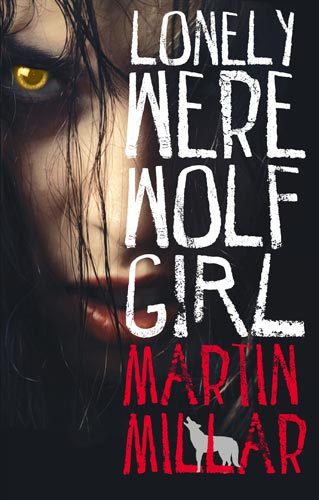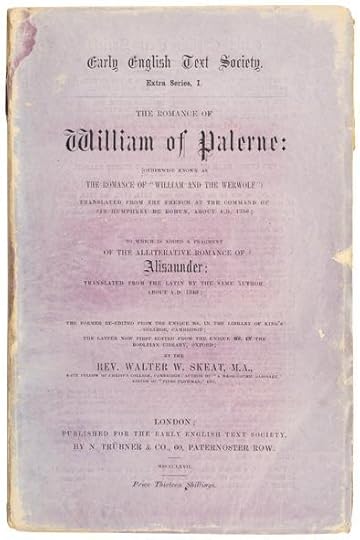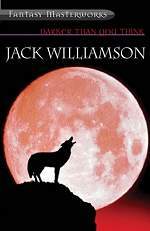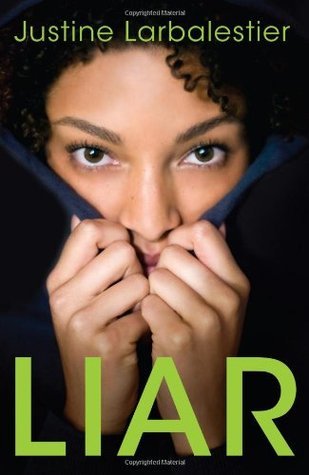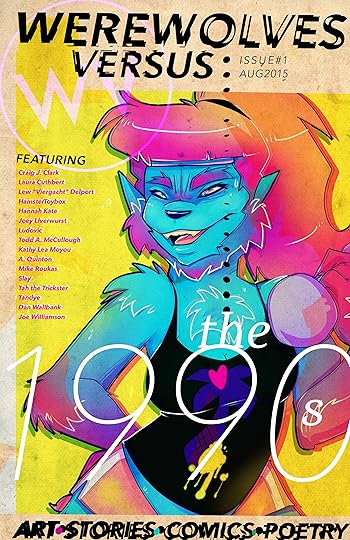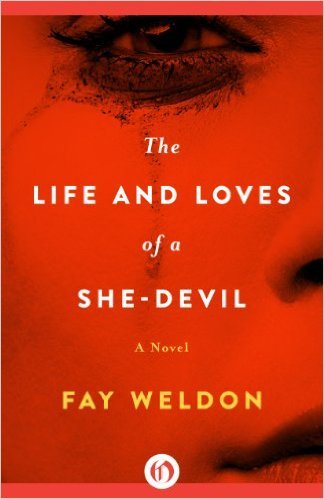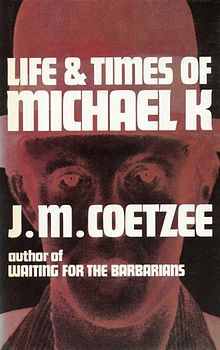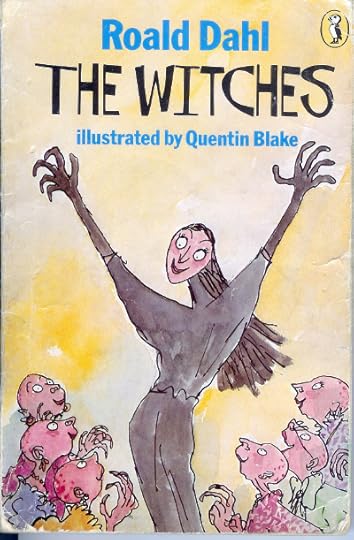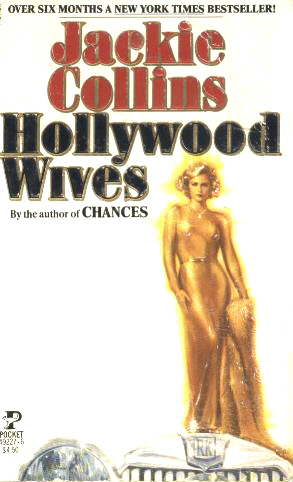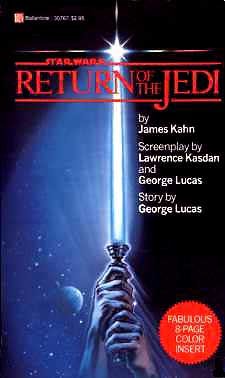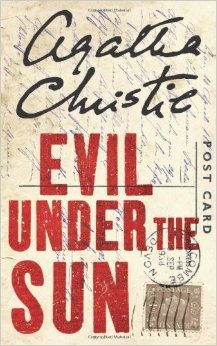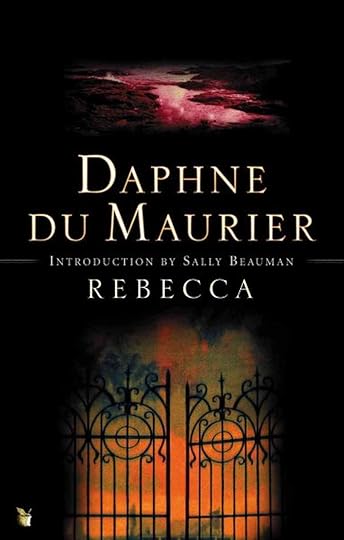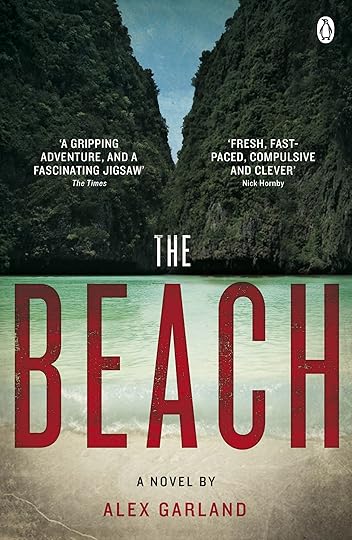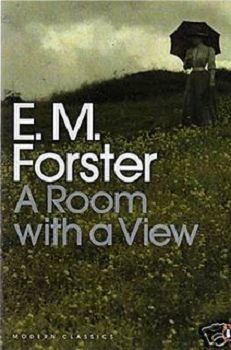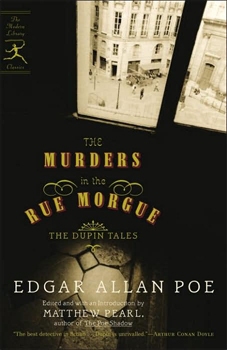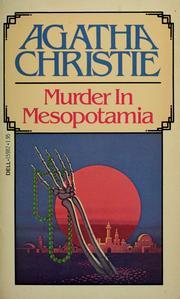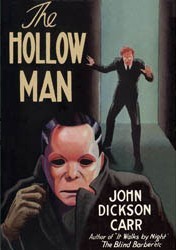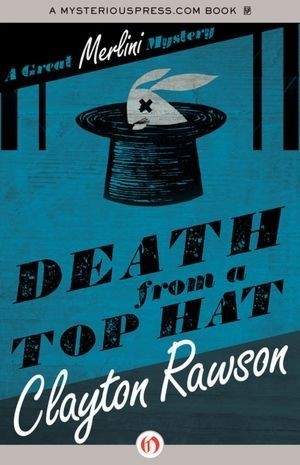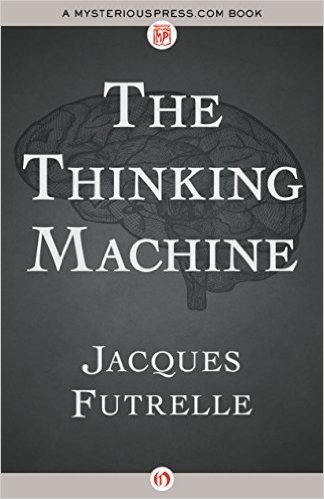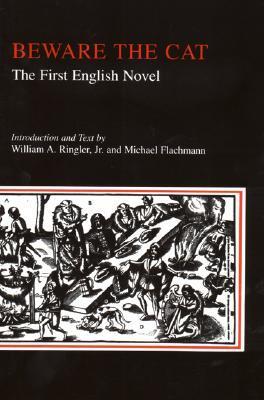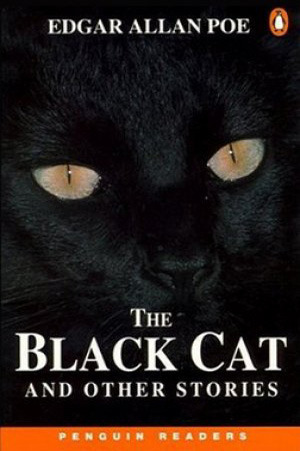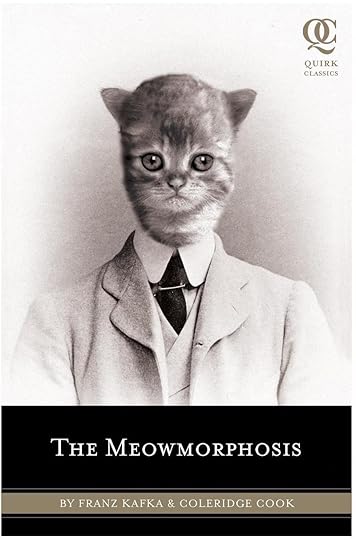Hannah Kate's Blog, page 72
October 28, 2015
My Favourite Werewolf Fiction: A Selection
On 26 September – in honour of the super blood moon – Hannah’s Bookshelf was entirely devoted to werewolf fiction. Given how much I like to talk about werewolves, it’s a little surprising that this hasn’t happened before, but I thought the lunar eclipse would be a perfect time to talk about some of my favourite lycanthropic fiction.
If you missed it, you can listen to the show on the player below. And, as promised, here are the books I featured on the show… (these are just a selection of my favourite werewolf books – all highly recommended – I suspect I’ll need to do a couple more shows to get through all my favourites!)
Lonely Werewolf Girl by Martin Millar
Published in 2007, Millar’s novel tells the story of Kalix MacRinnalch, a Scottish werewolf in exile after attacking her own father. Kalix is a wonderful creation – anti-social, drug-addicted, unpredictable, yet also sympathetic and strangely endearing – and she remains one of my favourite female werewolves. The novel’s large cast of lycanthropes includes Kalix’s sister Thrix (a powerful sorceress), brothers Seraphen (a psycho) and Markus (cross-dresser), cousins Beauty and Delicious (a pair of wannabe rock stars) and Malvaria (a supremely vapid elemental Fire Queen), but Kalix’s main interactions are with the humans Daniel and Moonglow. The book was followed by two sequels – Curse of the Wolf Girl and The Anxiety of Kalix the Werewolf.
William of Palerne (Anonymous)
Written in the mid-fourteenth century, William of Palerne is a translation (or, more accurately, an adaptation) of the Old French Guillaume de Palerne. It tells the story of William, Prince of Palerne, who is rescued from the machinations of his evil uncle by a benevolent werewolf. The werewolf is a Spanish prince, Alphons, who has been transformed into lupine form by his necromantic stepmother (she wants her own son to ascend the throne). William of Palerne is one of my favourite pieces of medieval literature, and definitely one of my top pieces of werewolf fiction. With my academic hat on, I’ve written a couple of articles and encyclopaedia entries about this narrative poem, most recently a chapter in Sexual Culture in the Literature of Medieval Britain (edited by Amanda Hopkins, Robert Rouse and Cory James Rushton).
If you’re not familiar with Middle English – or, to be honest, even if you are – William of Palerne is not an easy read, as the alliterative long line form and the use of dialect can be difficult for modern readers. And as yet, there’s no modern English translation available. But if you fancy giving it a shot, it’s certainly worth it.
Wagner, the Wehr-Wolf by George Reynolds
Moving forward a few centuries – what list of werewolf fiction would be complete without George Reynolds’ classic penny dreadful Wagner, the Wehr-Wolf? First published in 66 instalments (in 1846-7), this Gothic tale tells the story of the eponymous Wagner, an old man who makes a dangerous pact with a mysterious stranger. Modern werewolf fans may find some of this Victorian story unusual (for instance, Wagner is cursed to transform every seven years, rather than being under the influence of the moon), but the story does introduce some of the tropes that would become standard in werewolf cinema. In particular, it is one of the first (if not the first) text to feature a painful transformation scene – complete with torn clothing and desperation.
As I’ve mentioned before, I have been working on a project to produce fully-formatted, searchable editions of Victorian penny dreadfuls (Digital Periodicals), and Wagner, the Wehr-Wolf is one of the titles I have transcribed and edited. I’ve spent a lot of time poring over Reynolds’ novel and it remains very close to my heart.
Darker Than You Think by Jack Williamson
Williamson’s novel was published in 1948, and begins with news of an ethnological expedition to Mongolia that has discovered evidence of human beings who can transform into animals. Our protagonist is Will Barbee, a journalist and former student of the expedition’s spokesman Dr Lamarck Mondrick. When Dr Mondrick dies during the press conference about his discovery, Will is approached by April Bell, a woman with a white fur coat and an aversion to silver. April introduces Will to the truth about Dr Mondrick’s discovery – a truth which will turn out to be darker than you think!
In case you’re interested in Williamson’s novel, I reviewed it in more detail some time ago on my other blog.
The Were-Wolf by Clemence Housman
Another piece of Victorian literature, this time from 1896. Housman’s novella is set in a wintry medieval Scandinavia, and features two brothers (Sweyn and Christian) and a mysterious woman named White Fell (who, like April Bell, is depicted as wearing white fur and doesn’t get on with dogs). The Were-Wolf is part horror, part Christian allegory, and is highly recommended – not just by me, but by H.P. Lovecraft, who praised the tale for its ‘high degree of gruesome tension’ and ‘atmosphere of authentic folklore’.
Back to the twenty-first century for the final book of the show – one of my absolute favourite werewolf novels. The ‘liar’ of the book’s title is narrator Micah Wilkins, a teenager living with her parents in New York. Micah is a fantastic character, but one who always remains tantalizingly out-of-reach for the reader. As I’ve said before on the show, I love unreliable narrators, and Micah certainly fits this category. After her boyfriend Zach is killed, Micah’s lies begin to unravel – only to be replaced with new stories – until it’s hard to put your finger on exactly what has happened. If you haven’t already read Larbalestier’s excellent YA novel, then it’s about time you gave it a read.
To hear more about all of these titles, listen to Hannah’s Bookshelf here:
Hannah’s Bookshelf 26/09/2015 – Werewolves by Hannah’s Bookshelf on Mixcloud
The post My Favourite Werewolf Fiction: A Selection appeared first on Hannah Kate.
October 14, 2015
North Manchester FM: Hannah’s Bookshelf, Saturday 17 October, 2-4pm
Join me on Saturday, 2-4pm, for another episode of Hannah’s Bookshelf on North Manchester FM. This week, my guest will be local writer Heather Burnside.
Heather Burnside was born in inner Manchester and still resides in the city. Her early career was spent in credit control when she became a graduate Member of the Institute of Credit Management. After taking a career break to raise a family, Heather swapped credit control for writing, by studying for a writing diploma. She has had articles published in several popular UK magazines including Bella, Chat and The Lady, before going on to publish her first novel, Slur, a Manchester-based crime thriller. This was followed by the sequel, A Gangster’s Grip, which focuses on the inter-gang rivalry of 90s Manchester. Heather has also published a multi-genre short story collection entitled, Crime, Conflict & Consequences. When not working on her books, she provides a range of writing services for a diverse range of clients.
Heather will be talking to me about her books and inspirations. And, of course, she will be sharing her Apocalypse Books selections with us. Tune in at 2pm on 106.6FM (if you’re in the North Manchester area), or listen online (if you’re further afield).
And remember, you can still send me your submissions for One Minute Books. If you have a book you’d like to recommend (whether you’re the writer, the publisher or a reader), send me a voicemail and I’ll play it on the show.
The post North Manchester FM: Hannah’s Bookshelf, Saturday 17 October, 2-4pm appeared first on Hannah Kate.
September 30, 2015
North Manchester FM: Hannah’s Bookshelf, Saturday 3 October, 2-4pm
Join me on Saturday 3 October, 2-4pm, on North Manchester FM for Hannah’s Bookshelf.
My guest this week will be Madeleine Mitchell. Madeleine lives and works in Eccles as a writer, digital artist and holistic therapist. Up until a few years ago, she worked as a professional belly dancer and also taught Egyptian and Tahitian dance in Manchester for 17 years. An accomplished digital artist, she’s also provided artwork for other writers, and designs and produces covers for her own and other writers’ books. Her book, The Open Doorway, set against the American Civil War and the Lincoln Assassination, is her first full length novel. Examples of Madeleine’s artwork can be seen at Eccles Community Art Gallery, where it will be displayed until the middle of October. Madeleine also runs her own business, Karma Holistics, and offers Reiki healing, Reflexology and Massage therapy at her treatment room in Eccles.
I’ll be talking to Madeleine about her writing, research and artwork – and she’ll be sharing her Apocalypse Books selections. If you’d like to recommend a book for One Minute Books, send me your 60-second voicemail and I’ll play it on the show.
Tune in to 106.6FM (if you’re in the North Manchester area) or listen online (if you’re further afield).
The post North Manchester FM: Hannah’s Bookshelf, Saturday 3 October, 2-4pm appeared first on Hannah Kate.
September 18, 2015
North Manchester FM: Hannah’s Bookshelf, Saturday 19 September, 2-4pm
Join me this Saturday, 2-4pm, for Hannah’s Bookshelf on North Manchester FM.
This week, I’ll be joined by the brilliant Colin Daffern. Colin was born and raised in Salford, and went to the same schools as both the Ninth Doctor and Gandalf. He studied for a degree Sociology & Women’s Studies in, but not at, Cambridge. Twice a semi-finalist on Mastermind, his other quiz show appearances include A Question Of Genius, Fifteen-To-One and, most recently, Eggheads. During the summer months, he volunteers with Oxfam at many of the UK’s major music festivals, and also hosts a regular show on Northern Air, the hospital radio station serving North Manchester General Hospital and Salford Royal. Quizzing aside, his claims to fame are a) almost accidentally putting salt in Peter Mandelson’s coffee and b) doing an impersonation of Norman Wisdom in front of Norman Wisdom.
I’ll be talking to Colin about quizzes, research and what it takes to be a Mastermind semi-finalist – and, of course, that Norman Wisdom impression! Colin will also be sharing his Apocalypse Books selections.
Don’t forget, if you would like your book featured on One Minute Books, send me a 60-second voicemail and I’ll play it on the show.
Tune in to Hannah’s Bookshelf, 2-4pm, on 106.6FM (if you’re in the North Manchester area) or listen online (if you’re further afield).
The post North Manchester FM: Hannah’s Bookshelf, Saturday 19 September, 2-4pm appeared first on Hannah Kate.
September 16, 2015
OUT NOW: Werewolves Versus the 1990s
Really pleased to be part of this… Issue 1 of a fantastic new werewolf zine: Werewolves Versus…
A full-colour, mind-warping, 80+ page collection of werewolf art, stories, poetry and comics. Inspired by the decade of skateboards, clam digger shorts, AOL disks and the colour aqua.
Edited, designed and produced by A. Quinton
Cover design by Tandye
Contents:
Art: Kathy Lea Moyou, Joe Williamson, Ludovic, Tandye, HamsterToybox
Comics: Mike Roukas, Todd A. McCullough
Poetry and Stories:
Dial-Up by Tah the Trickster
Wasco by Laura Cuthbert
My Hazy Recollections Of Project: Metalbeast by Craig J. Clark
The Werewolves Of Brainerd by Dan Wallbank
Beasts Pay Their Dues by Slay
Heat Wave by Joey Liverwurst
Ill Will by Hannah Kate
FBI Warning by A. Quinton
‘N Amerikaanse Weerwolf in Kaapstad by Lew “Viergacht” Delport
To get a copy (pay whatever price you think is fair), click here.
For more information about this and future issues, click here.
The post OUT NOW: Werewolves Versus the 1990s appeared first on Hannah Kate.
Tell me about your book…
Thanks to a suggestion from the lovely Sean Le Vegan, I’m introducing a new feature on Hannah’s Bookshelf, and I’d love it if you could take part. It’s called One Minute Books.
Are you an author, poet, publisher or editor? Have you got an exciting book out – fiction, non-fiction, poetry or academic – that you’d like to tell me about? Can you describe it in 60 seconds? Send me a voicemail via the SpeakPipe widget below, and I’ll play it on my show.
If you’re not the author/editor, but have read a fantastic book you want to share with the world, please do send me a message as well. I’d love to include One Minute Books from readers as well.
Catch Hannah’s Bookshelf every Saturday 2-4pm on North Manchester FM .
So… if you’d like to tell me all about your book, send me your One Minute Books recording here:
A couple of little rules:
Voicemails must be no longer than 1 minute, so make sure you cover all the important info.
Please include an email address with your submission in case I need to contact you to get more info about your book(s).
No swearing, slander or copyright infringement.
The number of messages I play on the show will depend on how much time is available and how many submissions I get. I will try and get through as many as possible, but I can’t guarantee when submissions will be played.
The post Tell me about your book… appeared first on Hannah Kate.
September 12, 2015
Back to the 80s: 1983
On the 12th September, Hannah’s Bookshelf was all about the 80s! I decided to take a trip back in time and look at a selection of the best-selling fiction of 1983. If you missed the show, you can listen again on the player at the end of this post. As promised, here are the details of the books I featured on the show…
The Lives and Loves of a She-Devil by Fay Weldon
Weldon’s novel is known as a tale of romance, though the author herself claimed its main theme is envy. The Life and Loves of a She-Devil tells the story of Ruth, an unattractive housewife, and her husband Bobbo. After discovering Bobbo’s affair with glamorous romance novelist Mary Fisher, Ruth begins a campaign of destruction and reinvention. The book has been adapted twice: a 1986 BBC mini-series starred Julie T. Wallace, Patricia Hodge and Dennis Waterman, and the (somewhat looser) 1989 film She-Devil starred Roseanne Barr, Meryl Streep and Ed Begley Jr.
Life & Times of Michael K by J.M. Coetzee
Winner of the 1983 Booker Prize, Coetzee’s novel tells the story of Michael K, a gardener who attempts to travel through Apartheid-era South Africa from Cape Town to his mother’s rural birth place. Michael’s journey is a frustrated one, which sees him being found by soldiers, taken to a rehabilitation camp and studied by a doctor. Many critics have noted parallels between Coetzee’s novel and The Trial by Franz Kafka (and not just in the similarity of the protagonists’ names). J.M. Coetzee went on to win the 2003 Nobel Prize for Literature.
I have a lot of happy (and terrified) memories of reading The Witches as a child. Dahl’s tale of a young boy caught up in the sinister and secretive world of European witches has delighted kids for over 30 years. And Quentin Blake‘s iconic illustrations are a big part of its magic (even if one of them had me quivering under my bedcover when I saw it for the first time).
Hollywood Wives by Jackie Collins
Jackie Collins’ iconic novel Hollywood Wives was on the bestseller list for most of 1983. The book, Collins’ most successful novel, tells the intertwined stories of a number of women living and working in Hollywood. A number of indirect sequels followed: Hollywood Husbands (1986), Hollywood Kids (1994), Hollywood Wives: The New Generation (2001) and Hollywood Divorces (2003), and the 1983 novel was adapted into a mini-series starring Candice Bergen, Angie Dickinson and Anthony Hopkins.
Sadly, Jackie Collins passed away on 19 September 2015. During her life, she published 32 novels, all of which made the NYT bestseller list, and sold over 500 million copies of her books.
Although Eco’s debut novel, Il nome della rosa, was published in 1980, William Weaver’s English translation first hit the shelves in 1983 (so I think I’m allowed to include it in this list). Set in 1327, the novel is set in a Benedictine monastery in Northern Italy. In part an intellectual murder mystery – investigated by William of Baskerville and the novice Adso of Melk – and part an idiosyncratic creative essay on medieval theology, semiotics, philosophy and literature, The Name of the Rose is a rich and dense novel that entertains on a number of levels. The labyrinthine library at the heart of the novel’s mystery is an apt metaphor for the cerebral pleasures the book offers.
Eco’s novel was one of Nancy Schumann’s Apocalypse Books selections, and so is shelved in The Library at the End of Days.
Some other notable books:
The Woman in Black by Susan Hill
I discussed this wonderful Gothic novel on the show a few weeks ago. One of my favourites and definitely worth a read.
1985 by György Dalos
Hungarian author Dalos’ sequel to George Orwell’s 1984 was first published in 1983 (confusingly).
Stephen King – a writer who is frequently mentioned on the show – published Christine and Pet Semetary in 1983.
The Colour of Magic by Terry Pratchett
The first book in Pratchett’s Discworld series was first published in 1983.
Barbara Cartland published 12 historical romances in 1983, including A Duke in Danger, Gypsy Magic, Diona and Dalmatian and Lights, Laughter and a Lady.
William Golding won the Nobel Prize for Literature, and Alice Walker won a Pulitzer Prize for The Colour Purple.
But I ended the show by talking about the best-selling English language book of the year, which was…
Return of the Jedi by James Kahn
Based on the screenplay by George Lucas, Kahn’s official novelization was published in May 1983. Though there were some minor differences between the novel and the film, Kahn’s book was a successful and popular tie-in. Personally, I’m most interested in the way the Ewoks are presented – but I know that puts me in a minority. Sigh.
To hear more about all of these books, you can listen to the show here:
Hannah’s Bookshelf – 12/09/2015 by Hannah’s Bookshelf on Mixcloud
The post Back to the 80s: 1983 appeared first on Hannah Kate.
August 29, 2015
North Manchester FM: Hannah’s Bookshelf Bank Holiday Edition – and an important announcement about the show
North Manchester FM is moving home! From Tuesday 1st September, the station will be based at the Manchester Communication Academy in Harpurhey. As part of the move, we’re also having a few small schedule changes, and Hannah’s Bookshelf is moving to the new timeslot of Saturday 2-4pm.
Because of all the work to set up the new studio, there haven’t been any live shows this week. I’m not sure whether my Bank Holiday show will be going out on Saturday 29th – and, if it does, I don’t know if it will be on at 2pm or 4pm! – so I’m putting a link up here so you can listen to it online if it doesn’t go out on air.
And since it’s the last Bank Holiday weekend of the summer, today’s theme is… summer holidays! Every year, there are loads of lists published of books to read on holiday, but I thought I’d do something a bit different and talk about books featuring holidays. And, because it’s me, this quickly turned into a list of fictional holidays gone awry. Below are details of the books I’m discussing in the show – all of which are highly recommended. To hear more about each title and why I chose it for the list… well… you’ll just have to listen to the show!
1. Evil Under the Sun by Agatha Christie
There are a few of Agatha Christie’s novels I could have chosen for this theme, but I really do love Evil Under the Sun. First published in 1941, the book has Hercule Poirot trying to get some peace and quiet at the Jolly Roger Hotel in Devon. But, of course, it doesn’t go to plan, as the glamorous Arlena Marshall is found murdered and all the hotel guests have watertight alibis… or do they?
2. Rebecca by Daphne du Maurier
Okay, so whether or not this holiday ‘goes awry’ is kind of down to how you view the events of the book, but I certainly think it qualifies as a holiday with unpleasant consequences! In Daphne du Maurier’s 1938 classic, the unnamed narrator travels to Monte Carlo as the companion of a rich older woman. There she meets Maximilian de Winter, and the two enjoy a whirlwind holiday romance. But things take a darker turn when the narrator agrees to marry Maxim and live with him at Manderley.
Smith’s 2006 horror novel is set in Mexico, on the Yucatán Peninsula, this is a book for readers who like their holidays with a little more gore. A group of American tourists decide to wander off the beaten track and find a Mayan village dominated by a huge vine-covered hill. A young boy appears from the villager, apparently warning them away from the hill. But do they listen? Of course they don’t! Stephen King described this book as ‘the book of the summer’ in 2006, saying ‘it does for Mexican vacations what Jaws did for New England beaches in 1975′.
4. The Talented Mr Ripley by Patricia Highsmith
First published in 1955, Patricia Highsmith’s novel tells the story of Tom Ripley’s evolution from two-bit con man to obsessive predator. After tricking Herbert Greenleaf into believing he is an old friend, Tom travels to Sanremo supposedly to bring Herbert’s son Dickie back to the family business. Instead, Tom grows fond of Dickie’s decadent Italian lifestyle… maybe a little too fond! This is the first of a series of novels featuring Tom Ripley (known as ‘the Ripliad’), and it was followed by Ripley Under Ground (1970), Ripley’s Game (1974), The Boy Who Followed Ripley (1980) and Ripley Under Water (1991).
Like all of the books on today’s show, The Talented Mr Ripley has had the big screen treatment. But in the show I also mention Switzerland, a 2014 play by Joanna Murray-Smith. Murray-Smith’s play features an elderly and reclusive Highsmith, living in seclusion in the Swiss Alps. One day, a young man visits her, claiming to be a representative of her publisher… but is he what he seems?
Published in 1996, The Beach is the story of Richard, an English backpacker in Thailand, who is offered a map giving directions to an Edenic secluded beach. Along with a French couple, Étienne and Françoise, Richard follows the map, overcomes various challenges and discovers, not only a beautiful beach but also the close-knit and self-sufficient community who have made it their home. It seems like Paradise… but it’s not long before the cracks begin to show and Richard begins to see the darkness at the heart of the secretive community.
6. A Room With a View by E.M. Forster
Again, not technically a holiday ‘gone awry’, but certainly one with unforeseen (and life-changing) consequences. In Forster’s 1908 novel, Lucy Honeychurch travels to Florence, under the watchful eye of her cousin Charlotte Bartlett. There, while staying the Pension Bertolini, Lucy has a number of encounters with her fellow guests that threaten to seriously alter how she sees herself and her life back in England. In particular, she meets Mr Emerson and his son George who shake the foundations of her sheltered, genteel life.
As I’ve said a couple of times on the show, A Room with a View is one of my favourite books of all time, so this one is a really strong recommendation!
To listen to this week’s show, please use the player here:
Hannah’s Bookshelf 29/08/2015 by Hannah’s Bookshelf on Mixcloud
The post North Manchester FM: Hannah’s Bookshelf Bank Holiday Edition – and an important announcement about the show appeared first on Hannah Kate.
August 25, 2015
Locked Room Mysteries
For a while now, I’ve been working on a series of murder mystery dinner party games for Hic Dragones, and am reading a lot of locked room mysteries for inspiration. For me the locked room mystery – or other variations of the ‘impossible crime’ mystery – is one of the most satisfying types of puzzle in detective fiction, and so most of the games I have been creating are based on this formula. My partner and I ran a Twitter-based locked room mystery last year, entitled ‘Death Stalks the Stage‘, which a lot of people attempted but no one solved!
So I thought it would be cool to do an episode of Hannah’s Bookshelf devoted to locked room mysteries. This went out on Saturday 22nd August, and you can catch up with the show on the player below. The books I chose to talk about are all ‘classics’, rather than more obscure titles, but they are all favourites of mine. This is all subjective, of course, and I as I said on the show I have quite a strict set of personal rules about what makes a good locked room mystery. And I was very careful not to give any spoilers on air!
As always, here are the details of the books I discussed in the show. If you have any recommendations – or if you disagree with any of my choices – let me know in the comments section.
The Murders in the Rue Morgue by Edgar Allan Poe
First published in Graham’s Magazine in 1841, Poe’s short story is one of the first modern detective stories, and introduces the character of C. Auguste Dupin – the first of the brilliantly rational fictional detectives that we know and love. And the eponymous murders do indeed take place in a room that is inaccessible and locked from the inside. I did express some dissatisfaction with the story’s reveal (NO SPOILERS!) and likened it to the explanation given in Arthur Conan Doyle’s ‘The Speckled Band’, but this is just my own opinion, of course.
The Queen of Crime’s huge body of work includes a wider variety of mental puzzles, tricks and twists than any other, so it’s no surprise that she often presented ‘impossible’ scenarios for her detectives (and readers) to ponder. While many of her books contain seemingly impossible crimes, I chose the novels that use a literal locked room for this list. So my recommendations would be: Murder in Mesopotamia (1936), Hercule Poirot’s Christmas (1938), And Then There Were None (1938) and the Poirot short story ‘The Dream’, in The Adventure of the Christmas Pudding and a Selection of Entrées (1960).
If Agatha Christie is the Queen of Crime, then John Dickson Carr (who also wrote under a variety of pseudonyms) is the King of the Locked Room. Impossible crimes were such a common feature of his work that it’s actually quite hard to narrow down my recommendations… but here goes… The Hollow Man (1935) is a must-read, not just for the plot (with not one, but two ‘impossible’ crimes and a series of apparently incongruous clues), but for Dr Gideon Fell’s ‘locked room lecture’ in Chapter 17. The Plague Court Murders (writing as Carter Dickson, 1934) is also excellent, and marks the first appearance of Sir Henry Merrivale, Carr’s barrister detective. Speaking of whom, The Judas Window (1938) is also a personal favourite, as I particularly enjoyed the way Merrivale taunts a jury (and the reader) with just how obvious the solution is.
Clayton Rawson – The Great Merlini Mysteries
I discovered Rawson’s books after a bit of a Jonathan Creek binge. I always loved Jonathan Creek, but was quite disappointed when rewatching the old series back-to-back. Don’t get me wrong, there are some excellent episodes (‘Danse Macabre’, the first episode of the second series has, for me, a near-perfect solution for a locked room mystery), but some of the plots were rather far-fetched and the solutions were often overly-contrived. But I love the use of stage magic as a backdrop (and I talked a lot in the show about my love of stage magic and conjuring), so was really pleased to discover the Great Merlini novels, which also draw heavily on the tricks of the magician’s trade but in a far more extended way. Death from a Top Hat (1938) is the first (and arguably the best) of the series, and it was followed by The Footprints on the Ceiling (1939), The Headless Lady (1940) and No Coffin for the Corpse (1942). These books were available as eBooks for a while, but at the time of writing this only seem to be available as audio books or secondhand paperbacks.
The Problem of Cell 13 by Jacques Futrelle
This was a rare non-recommendation from me. First published in 1905, and found in the collection The Thinking Machine, ‘The Problem of Cell 13′ regularly crops up on lists of the ‘greatest locked room mysteries’ – but I really can’t see the appeal! In fact, I’m not sure it should even be counted alongside the other detective stories listed here, as the premise is really quite different. Augustus S.F.X. Van Dusen – the eponymous ‘thinking machine’ – wagers that he will be able to escape from an infamously secure prison cell… and then he does. The mystery lies in the method used for the escape, which, for me, was a huge disappointment and more than a bit silly. For me, the difference between ‘The Problem of Cell 13′ and the other books on this list is like the difference between watching an escapologist and watching a conjuror. And I have to admit I prefer the latter!
For more information about these books and why I chose them, and to hear me talk more about the relationship between stage magic and locked room mysteries, you can catch the show again here:
Hannah’s Bookshelf 22/08/2015 by Hannah’s Bookshelf on Mixcloud
The post Locked Room Mysteries appeared first on Hannah Kate.
World Cat Day – My Favourite Fictional Cats
Saturday 8th August was World Cat Day, so Hannah’s Bookshelf had a feline theme. I talked about some of my favourite books with memorable cats. I decided to avoid children’s books (just for now – there are some fantastic cats in children’s fiction and I may return to this theme on another show), and books about big cats or feline shapeshifters. As promised, this blog post simply gives details of all the books mentioned on the show. If you would like to hear more about these titles, or the reasons why I chose them for this list, you can catch up with the show on the player below. Got an awesome cat book to recommend? Leave a comment!
Beware the Cat by William Baldwin
Written in c.1553 and first published in 1561, Beware the Cat is often described as the first novel written in English. This short novel is set at Christmas and has a first person narrator, who regales his bedmates with a series of interlinked stories on various supernatural themes. The book includes an early version of the The King of the Cats folktale – one of my favourite folktales – a story about Grimalkin (possibly the first ever use of this name), and a description of a secret underworld of talking cats. Though they possibly appear humorous and cute to modern readers, these stories were intended as sinister tales of horror, and an undercurrent of anti-Catholic sentiment and allusion runs throughout Baldwin’s book. For this reason, the book was suppressed and censored during the reign of Mary Tudor.
If you’re interested in learning more about the early modern association of cats with Catholicism and heresy, I thoroughly recommend Bruce Thomas Boehrer’s Animal Characters: Nonhuman Beings in Early Modern Literature. It’s an academic book (so not cheap), but it might be possible to order through your library.
Breakfast at Tiffany’s by Truman Capote
Truman Capote’s 1958 novella might be best known now through the 1961 film adaptation starring Audrey Hepburn, but I do love Capote’s book. Breakfast at Tiffany’s is a sketch of a young party girl named Holly Golightly, as seen through the eyes of an unnamed narrator (known only as ‘Fred’) who was once her neighbour. The reason for its inclusion is this list is that Holly shares her flighty, moment-to-moment existence with a nameless cat. The book has a slightly different to the film, so the stories of Fred, Holly and the cat work out quite differently than in the adaptation. I love the film (it’s one of my favourites), but the book is definitely a must-read too.
‘The Black Cat’ by Edgar Allan Poe
A pretty obvious choice, maybe. But an absolute classic. First published in The Saturday Evening Post in 1843, Poe’s short story is a chilling tale of one man’s psychological deterioration brought about by his alcoholism. Pluto, the black cat of the title, is a pretty memorable feline – though some parts of the story are very hard to read as a cat lover. As I mentioned on the show, Poe himself was a big fan of black cats and wrote an essay entitled ‘Instinct vs. Reason – The Black Cat’ in which he stated: ‘The writer of this article is the owner of one of the most remarkable black cats in the world – and this is saying much; for it will be remembered that black cats are all of them witches.’
The Master and Margarita by Mikhail Bulgakov
Bulgakov’s novel was written between 1928-40, but remained unpublished until 1967. The story concerns the arrival of the sinister Professor Woland and his retinue in Moscow. Part 1 of the novel concerns Woland’s appearance to Berlioz, the atheist head of the literacy bureau, and the introduction of the Master, an embittered novelist who has turned his back on real life. Part 2 concerns Margarita, the Master’s lover, and her initiation as a witch at Satan’s midnight ball (have a guess who Professor Woland turns out to be). The reason for the book’s inclusion in this list is that Woland’s retinue includes the utterly fantastic Behemoth, a giant sarcastic chess-playing, vodka-swilling, pistol-loving black cat.
The Meowmorphosis by Coleridge Cook (and Franz Kafka)
From the publishers that brought you Pride and Prejudice and Zombies and Sense and Sensibility and Sea Monsters (Quirk Classics), comes a somewhat more bizarre mash-up. ‘One morning, as Gregor Samsa was waking up from anxious dreams, he discovered that he had been changed into an adorable kitten.’ Like the other titles from Quirk, this book takes a classic book and gives it a modern, off-beat twist. However, far from just adding a silly element to Kafka’s text, The Meowmorphosis really runs with the ‘adorable kitten’ idea, and uses it to take Gregor out of his bedroom and into some original territory. Coleridge Cook (a pseudonym) does a fantastic job of creating a Kafkaesque voice without simply aping the original. Publisher’s Weekly described the book as: ‘Highly recommended for connoisseurs of the bizarre.’ And I would certainly agree.
To find out more about all these books, and why I included them in my list, catch up with the World Cat Day edition of Hannah’s Bookshelf here:
Hannah’s Bookshelf 08/08/2015 by Hannah’s Bookshelf on Mixcloud
The post World Cat Day – My Favourite Fictional Cats appeared first on Hannah Kate.


